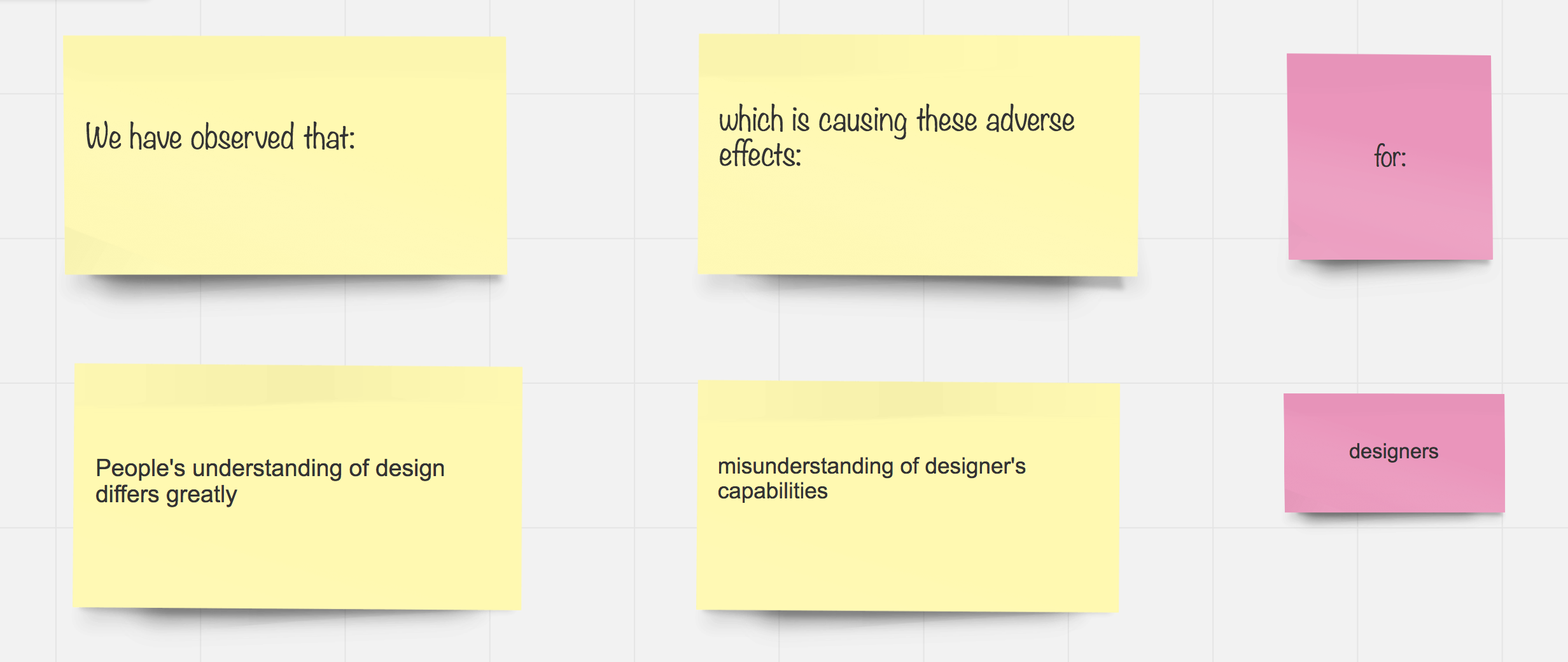Hypothesis Definition define
Tools
- Video conferencing app
- Collaborative text editor
- RealTimeBoard
Why do it:
Defining our solutions through a hypothesis framework allows us to acknowledge that we are making assumptions and testing those assumptions through our prototypes validates our hunches.
When to do it:
Create hypotheses before you begin prototyping in any form. Hypotheses are a framework to help you to articulate what it is that you are going to make.
Who’s involved:
Designers, stakeholders and engineers
Time estimate:
Small (30 minutes - 1 hour)
One way to do it:
-
Put your personas, user journeys and journey maps to work by identifying the user goals. Decide a) what’s the user’s goal and b) how might we create a way to test that goal. In this example, we used RealTimeBoard to create a few prompts for participants to collaborate on in a video conference for Open Design Kit.

We have observed that: ________ which is causing these adverse effects:__________ for: __________.

The whole team should try to populate the board with as many problem statements as possible.
-
You might have a large list of problem statements - if so, create an affinity diagram to prioritize 1 - 3 problems to address with your initial prototype.
-
Work with the entire product team to complete the prompts:

“We believe that [this solution] will enable [this persona] to accomplish [this goal].”
We had participants on an Open Design Kit video conference call collaborate to come up with as many different hypotheses as they could think of.
-
This hypothesis that should be included in the design documentation for reference throughout the course of the project.
For Open Design Kit, we moved the hypotheses into a GitHub wiki and added one more prompt:
“We will know we are right when: __________”
This prompt is very useful for helping you to figure out what to test when you are up to doing a usability test on your prototype.
